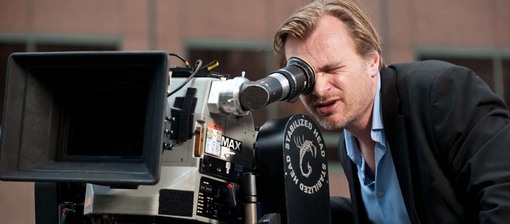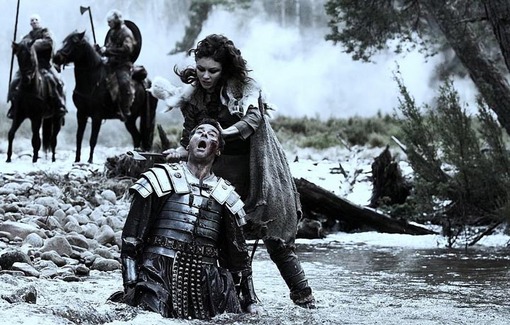From the opening shot of “Cutter’s Way” — my favorite movie of the 1980s.
… and speaking of critical “best of” movie lists, here’s a swell one called “50 Lost Movie Classics,” from The Guardian. I might quibble with the terms “lost” (how “lost” can they be, when so many of them are available on DVD?) or “classics” (a “masterpiece” can be lost or overlooked, but can a “classic”?). But it is what it is. A group of British critics and filmmakers chose 50 movies (I have no quibbles with either of those terms) that… well, allow Philip French to explain:
This isn’t just another list of great movies. It’s a rallying cry for films that for a variety of reasons — fashion, perhaps, or the absence of an influential advocate, or just pure bad luck — have been unduly neglected and should be more widely available. You know that feeling when someone hasn’t heard of a film you’ve always loved and you want to show it to them? Or, in a different way, when you get annoyed because a picture hasn’t been accorded the position you think it deserves in cultural history or the cinematic canon? That’s the sort of film we have included on this list.And now, please permit me to add my own huzzahs for a few of the selections, several of which have also been featured on my personal “ten-best” lists over the years — or would have been, in the event that I had made one that year. (And some were released before I was born, OK?) Several of these have already been discussed here at Scanners. Here are just a few of the choices I’d particularly like to second:
“Petulia” (Richard Lester, 1968) — use the link to read about the opening shot.”The State of Things” (Wim Wenders, 1982) — one of the best movies about movies ever. And “Stranger Than Paradise” was made using the leftover b&w stock.”Newsfront” (Phillip Noyce, 1979) — charming account of Aussie newsreelers.”Fat City” (John Huston, 1972) — best boxing movie ever (and, yes, I include “Raging Bull” and “Rocky”).”Ace In the Hole” aka “The Big Carnival” (Billy Wilder, 1951) — no excuse for this to still be unavailable on DVD.”3 Women” (Robert Altman, 1977) — just watched it again the night Altman’s death was announced and was thrilled to find it as mesmerizing as ever…”Twin Peaks: Fire Walk With Me” (David Lynch, 1992) — although I think the series is by far the best work Lynch has ever done, I didn’t “get” this one when it came out. Now I think it’s genius (and should be double-billed with “Mulholland Drive”).”Safe” (Todd Haynes, 1995) — my choice for best movie of 1995.”Housekeeping” (Bill Forsyth, 1987) — my choice for best movie of 1987.”The Parallax View” (Alan J. Pakula, 1974) — NOT “Alan J. Parker” as The Guardian has it, fer cripes sake!!! Gripping paranoid thriller — with a fight atop my beloved Space Needle!”Dreamchild” (Gavin Millar, 1985) — nice double-bill with “Pan’s Labyrinth,” I think.”The Ninth Configuration” (William Peter Blatty, 1980) — I see a big moon risin’…”Cutter’s Way” (Ivan Passer, 1981) — my choice for the best movie of the 1980s.”Wise Blood” (John Huston, 1979) — I don’t think I’ve ever fully recovered from the scars this one left on me.”Two-Lane Blacktop” (Monte Hellman, 1971) — this does qualify as a cult classic.”‘Round Midnight” (Bertrand Tavernier, 1986) — Dexter Gordon as a version of Dexter Gordon, in gorgeous widescreen. One of the best evocations of cinema as jazz, and vice-versa.”Grace of My Heart” (Allison Anders, 1996) — pop music history mix-and-match (not unlike “Velvet Goldmine” in that respect) with terrific songs co-authored by Brill Building vets and contemporary artists. I watch this one over and over. Made me fall in love with Illeana Douglas.
Some of the choices I haven’t seen: “Ride Lonesome,” “Jeremy,” “Under the Skin,” “I Wanna Hold Your Hand,” “Let’s Scare Jessica to Death,” “The Low Down,” “Quiemada!,” “The Hired Hand,” “Le Petomane,” “Bill Douglas Trilogy,” “Babylon,” “Day Night Day Night” (just missed it in Toronto!), “The Day the Earth Caught Fire,” “The Mad Monkey,” “Terence Davies Trilogy” (not sure what individual titles they mean to include, but “The Long Day Closes” was my best movie of 1992 — or was it 1993 in the US?). And there are others the list reminds me to revisit (like Monte Hellman’s “Cockfighter”) because it’s simply been too long.
Take a peek and let us know which ones you treasure (or don’t) — and maybe suggest some additional titles for such a list…
December 14, 2012




